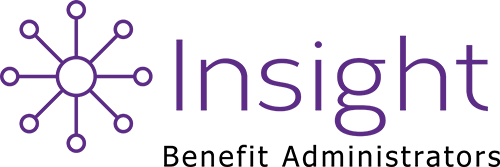About Self Funding
Self funding (and a few alternative funding options) offer a range of advantages.
Rather than paying month after month for benefits that may not be used, you instead pay actual costs incurred by your employees.
Insight Benefit Administrators helps you select the exact benefits plans you need, and we handle all of the administration. You get more control and flexibility with the benefits you offer and your HR staff can focus on other tasks.
We have vetted dozens of providers of health benefits, vision and dental, and short term disability and we bring you those that are highest-rated and most efficient.
Administrative costs are lower
- You don't pay premium taxes
- You don't have to offer state mandated benefits if you choose not to
- There are no medical loss ratio requirements
- You pay none of the health insurance industry fees that help fund State and Federal Health Insurance Exchanges
- You're free from many Affordable Care Act fees
- Your financial risk is managed with Stop Loss insurance
- You get detailed reporting, providing you with a clearer understanding of how your dollars are spent
While there are more administrative decisions for you to make, we're here to guide you. We have the insight needed to pull all the parts together to result in a comprehensive benefits package that fits your needs and your employees'.
We know that to win your business -- and keep it -- we need to offer the best value and service your benefits dollars can buy.
Self Funding 101
Unlike fully insured health carriers that charge a set amount of premiums regardless of the claim costs, self-funding allows you to pay for only the claims incurred by your covered members.
Self-funded coverage consists of claims costs, reinsurance premium and third party administration costs. Fully insured coverage consists of set monthly premiums, multiplied by the number of covered members on the plan. With a fully insured plan, you face the same premium every month regardless of the claim costs that are actually incurred. And outside of continually increasing members’ out-of-pocket exposure (deductibles, copays and coinsurance) you have a limited ability to impact annual premium increases.
With Self Funding you partner with a Third Party Administrator (TPA) to provide overall administration of the plan. A TPA provides services including:
- claims payment
- customer service
- stop loss selection
- network access
- pharmacy benefit management services
Reinsurance – your safety net
There are two basic types of reinsurance coverage:
Specific Coverage:
Specific coverage is purchased to protect you from very high claims incurred by an individual. Each individual member is covered after a certain dollar amount of claims are incurred. Any claims dollars incurred above that deductible are then covered by the reinsurance carrier.
Aggregate Coverage:
Aggregate coverage protects you from high claims across your entire group. Any claims dollars incurred above an agreed upon dollar amount (also known as the Attachment Point) are covered by the reinsurance carrier.
Level Funding (aka Shared Funding) as an alternative to Self Funding
Level funding combines the advantages of self funding with the benefit of set monthly costs you’d get with a fully funded program. If claims are less than the funded amount at the end of the year, you get a rebate or credit. If claims for the year are higher than the amount you funded, the overage is partially or fully covered by stop-loss insurance.
Level-funding can lower your cost over a fully funded plan:
- You can still tailor your plan to your specific needs
- State taxes are eliminated
- Your costs don’t include the profit margins and risk charges that come with a fully funded plan from an insurance carrier.
- Level-funded plans are exempt from many of the federal healthcare law’s health insurance taxes
- Level-funded plans can be paired with a Flexible Savings Accounts (FSA), Health Savings Accounts (HSA) or Health Reimbursement Accounts (HRA)
Captive Insurance
Captive insurance is another alternative to self-insurance in which you or you and a group of other employers create a licensed insurance company to provide coverage yourselves. The main reason for creating a captive insurance plan is to avoid volatile pricing and restrictions on what your benefit plan can include. When a company creates a captive plan they are indirectly able to evaluate the risks of subsidiaries, write policies, set premiums and either return unused funds in the form of profits, or invest them to cover future claims.
Captives can be set up in a number of ways:
- Non-sponsored -- The company is the creator and beneficiary. The most common are single-parent or “pure”, group and association.
- Sponsored -- The captive is owned and controlled by another company that allows other companies to “rent” insurance.
To learn more about Captive Insurance, please contact Howard Lancaster.
Getting started – obtaining a quote
When you’re ready to look into specifics of cost, be prepared to provide:
- Premium information (current, renewal, two-year history)
- Schedule of Benefits for current plan(s)
- Enrollment in Current plan(s) and history for the most recent 12 months
- Employee/covered members Census Data including ages, gender, dates of birth, zip code and contract size
- Diagnosis and prognosis on large claimants in the most recent 12 months
- Current Network
- Claims history when available (current and two-year history)
- Pharmacy Rebates and Discounts
Insight Benefit Administrators can guide you as you gather the information needed for a self funding quote.
